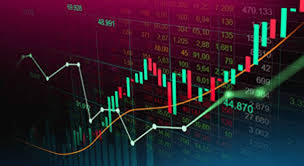
Opening an Online Account for Forex Trading: A Step-by-Step Guide
In today’s digital age, opening an online account for forex trading has become easier than ever. With a plethora of platforms available, traders can access the foreign exchange market from the comfort of their homes. To make the process seamless, this guide will walk you through the essential steps to open a forex trading account, as well as share tips on selecting the right platform for your needs. Don’t forget to check out open online account for forex trading Top Mobile Trading Apps for mobile trading solutions.
Understanding Forex Trading
Forex trading involves buying and selling currencies in pairs, aiming to profit from fluctuations in exchange rates. It is one of the largest and most liquid markets globally, where daily trading volumes exceed $6 trillion. This high liquidity, combined with the ability to trade 24 hours a day, makes forex trading an appealing option for many investors.
Choosing a Forex Broker
The first step in opening an online forex trading account is selecting a reputable broker. Here are some vital factors to consider:
- Regulation: Ensure the broker is regulated by a recognized authority, such as the Financial Conduct Authority (FCA) or the Commodity Futures Trading Commission (CFTC).
- Trading platform: The broker should offer a user-friendly trading platform with essential tools and resources.
- Spreads and fees: Compare the spreads and transaction fees among different brokers to find the most cost-effective option.
- Customer support: Look for brokers that provide prompt and helpful customer service in case you encounter issues.
Steps to Open Your Forex Trading Account
Once you’ve chosen a broker, follow these steps to open your trading account:
1. Fill Out the Application Form
Visit the broker’s website and find their account registration section. Complete the online application form, providing personal information such as your name, address, email, and phone number.

2. Verify Your Identity
Most brokers require you to verify your identity to comply with regulatory standards. You will typically need to submit documents such as:
- Government-issued ID (passport or driver’s license)
- Proof of address (utility bill or bank statement)
3. Fund Your Account
After your identity is verified, you can fund your trading account. Most brokers offer various payment methods, including bank transfers, credit cards, and e-wallets. Be aware of the minimum deposit requirements and any fees associated with funding your account.
4. Download the Trading Platform
Once your account is funded, download the broker’s trading platform. Most brokers provide a desktop version, a mobile app, and a web-based platform. Ensure the platform is compatible with your device and easy to navigate.
5. Start Trading
Before diving into live trading, consider practicing with a demo account, which many brokers offer. This allows you to familiarize yourself with the platform and trading strategies without risking real money. Once you feel comfortable, you can start placing live trades.
Tips for Successful Forex Trading
Forex trading can be profitable, but it also comes with risks. Here are some tips to enhance your trading experience:
- Educate Yourself: Stay informed about market trends, economic indicators, and trading strategies by reading books, blogs, and attending webinars.
- Practice Risk Management: Use stop-loss orders to limit potential losses, and never risk more than you can afford to lose in a single trade.
- Develop a Trading Plan: Create a comprehensive trading plan that outlines your goals, strategies, and tactics for entering and exiting trades.
- Stay Disciplined: Avoid emotional trading and stick to your trading plan, even during volatile market conditions.
Conclusion
Opening an online account for forex trading is an accessible process if you take the necessary steps to choose the right broker and understand the trading environment. With the right guidance and resources at hand, you can embark on a journey toward forex trading success. Remember to continuously educate yourself and adapt your strategies based on market dynamics.


